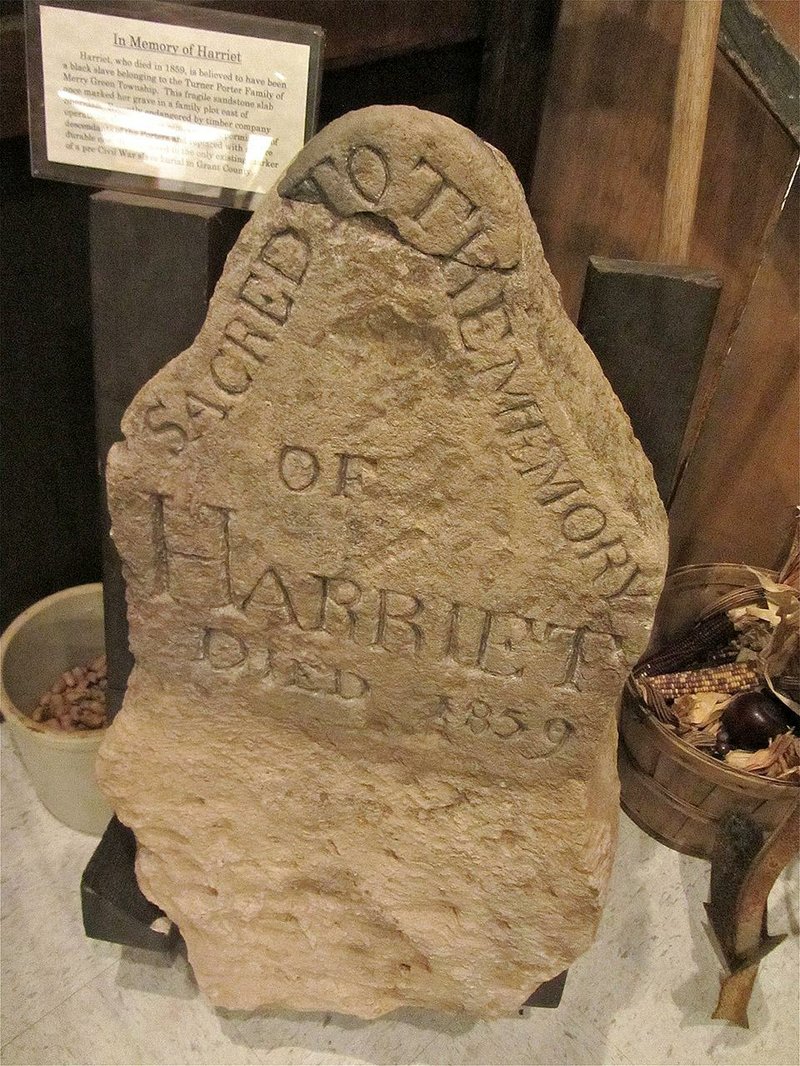SHERIDAN -- One exhibit at the impressively wide-ranging Grant County Museum is kept behind closed doors.
Its cabinet is not locked, but a sign warns that the contents might be offensive or shocking. To view them, instructs the sign, visitors can open the latch.
Inside hang two white robes and hoods worn in Grant County by Ku Klux Klan zealots in the 1920s -- when that bastion of bigotry was ascendant in Arkansas and elsewhere in America.
Few local museums are forthright enough to offer such a glimpse at a disgraceful facet of their community's past. And that is among many virtues at this lively facility on the south edge of Sheridan, 35 miles south of Little Rock.
Another race-related exhibit evokes a heartfelt rather than a hateful frame of mind. It is a grave marker inscribed: "Sacred to the memory of Harriet. Died 1859."
The Harriet in question "is believed to have been a black slave belonging to the Turner Porter family of Merry Green Township. This fragile sandstone slab once marked the grave in a family plot east of Sheridan. ... It is believed to be the only existing marker of a pre-Civil War slave burial in Grant County."
Mindsets being what they were in the antebellum South, Harriet evidently was given no last name -- although she at least was allowed to rest in peace near her owners.
The museum, started by history teacher Elwin Goolsby in 1963 as a project for his high school students, occupies the handsome W.R. "Witt" Stephens Building opened in 1994. The late financier and the City of Sheridan paid for its construction on donated land.
Some exhibits are likely to bring a chuckle rather than the gasp the Klan robes may stir. Behind glass, perched next to a wooden butter paddle, is a bell "worn by Mary Freeman of Sheridan in a cow calling contest in 1926." A visitor only wishes for a recording of the competition.
A postcard from a century ago shows "a Fat Man's Race," with one really stout and another less heavy contestant huffing and puffing along a street in Sheridan.
Pictured in another exhibit is Minnie B. Humphrey Clark, "believed to have been the second female sheriff in the United States." After her husband's death, Clark succeeded him as Grant County sheriff in 1937-1938.
One of the museum's seven galleries is devoted to the Civil War Battle of Jenkins' Ferry, which took place in 1864 a dozen miles southwest of Sheridan. A highlight is a poignant tableau of a soldier with a bloody chest wound waiting for help in the parlor of a home near the battle site.
As lagniappe to the bevy of indoor displays, there's a Heritage Square Walking Tour of a dozen relocated structures with a past.
Arrayed along a looping path next to the museum, they include Toler Chapel, a Methodist church from the 1930s; a working blacksmith shop; and the McCool House, an 1870s dogtrot home in which that family's 12 children were born.
Jolliest of the vintage buildings is Mill Town Cafe, which looks ready to serve the lunches it purveyed from 1927 until the 1960s.
The circular counter stools are topped with red plastic, while wall signs advertise Mr. Goodbar candy, Nehi soda and Chesterfield cigarettes. A posted menu lists colas for a nickel, hamburgers for a dime and plate lunches for 45 cents. In that regard, at least, those were the good old days.
Grant County Museum, 521 Shackleford Road, Sheridan, is open 9 a.m.-4 p.m. Tuesday-Saturday. From U.S. 270 West, turn south on Arkansas 46. After a mile, turn west on Shackleford Road and go a block to the museum. No admission is charged, but donations are encouraged. For museum details, call (870) 942-4496 or visit grantcountymuseum.com.
Weekend on 01/29/2015

